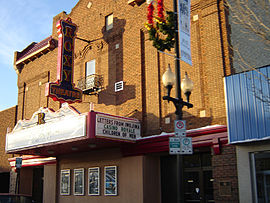
Saskatoon is the largest city in the Canadian province of Saskatchewan. It straddles a bend in the South Saskatchewan River in the central region of the province. It is located along the Trans-Canada Yellowhead Highway, and has served as the cultural and economic hub of central Saskatchewan since its founding in 1882 as a Temperance colony.

Loews Cineplex Entertainment, also known as Loews Incorporated, was an American theater chain operating in North America.
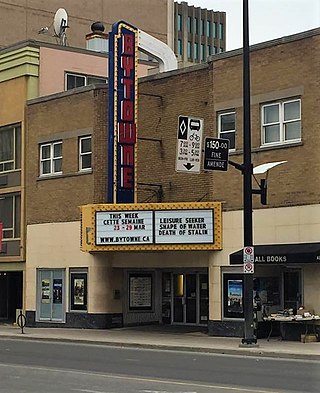
The ByTowne Cinema is a one-screen repertory movie theatre located in Ottawa, Ontario, The cinema is one of Ottawa's main venues for independent and foreign films. The 650-seat cinema is located on Rideau Street at Nelson, several blocks east of the Rideau Centre. It was closed on December 24, 2020, with a final week of screenings shown on February 26 to March 7, 2021. The cinema reopened under new ownership on September 8, 2021.
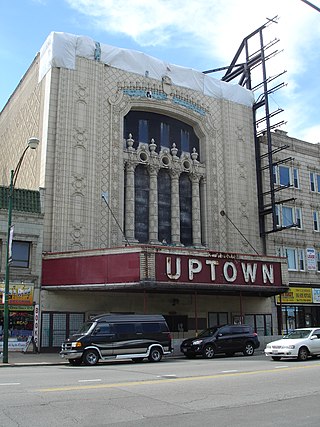
A movie palace is any of the large, elaborately decorated movie theaters built between the 1910s and the 1940s. The late 1920s saw the peak of the movie palace, with hundreds opening every year between 1925 and 1930. With the advent of television, movie attendance dropped, while the rising popularity of large multiplex chains in the 1980s and 1990s signaled the obsolescence of single-screen theaters. Many movie palaces were razed or converted into multiple-screen venues or performing arts centers, though some have undergone restoration and reopened to the public as historic buildings.
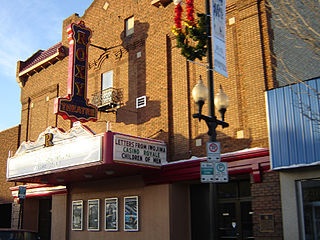
Magic Lantern Theatres is a chain of 11 movie theatres in Canada. Three of these locations are Rainbow Cinemas discount theatres. Magic Lantern Theatres was founded in 1984 in Edmonton, Alberta, while Rainbow Cinemas was founded in the early 1990s in Saskatoon, Saskatchewan. The two chains merged and are now based in Edmonton. In May 2016, a strategic decision was made to sell all of the Ontario cinemas to Imagine Cinemas, except for the Cobourg location. With Magic Lantern and Rainbow operate 43 screens, it is the fourth largest movie chain across Canada behind Cineplex Entertainment, Landmark Cinemas and Imagine Cinemas.

Cineplex Inc. is the largest cinema chain in Canada.

Empire Theatres Limited was a movie theater chain in Canada, a subsidiary of Empire Company Ltd., the holding company of the Sobey family conglomerate.
Famous Players Limited Partnership was a Canadian-based subsidiary of Cineplex Entertainment. As an independent company, it existed as a film exhibitor and cable television service provider. Famous Players operated numerous movie theatre locations in Canada from British Columbia to Newfoundland and Labrador. The company was owned by Viacom Canada but was sold to Cineplex Galaxy LP in 2005.

Landmark Cinema of Canada Inc. is a Canadian cinema chain. Based in Calgary, Alberta, Landmark operates 39 theatres with 317 screens, primarily in Ontario and western Canada. Its holdings include much of the former Empire Theatres chain which it acquired in late 2013, and some Famous Players locations divested as part of that chain's purchase by Cineplex Entertainment. Landmark is the second-largest cinema chain in Canada after Cineplex. It was acquired by Belgium company Kinepolis in 2017 for $123 million.

Midtown is a shopping mall in Saskatoon, Saskatchewan, Canada, located in the Central Business District neighbourhood. The main anchor store is Hudson's Bay and the shopping centre has a total store count of 154 stores. The mall was built on the former site of the city's main railway station as part of a major inner city redevelopment project in the 1960s that also saw construction of a freeway, the Senator Sid Buckwold Bridge, TCU Place - an arts-convention complex - and a new facility for the city's YMCA.

The Centre is a major shopping mall located south-east of the junction of Circle Drive and 8th Street in Saskatoon, Saskatchewan in the Wildwood neighbourhood. Sometimes commonly referred to as The Centre At Circle And 8th or The 8th Street Mall It is currently anchored by Sport Chek, Saskatoon Co-op, Rainbow Cinemas, the Centre Cinemas, Shoppers Drug Mart, Best Buy, Indigo Books and Music and Dollarama. Until 2003–2005, Canadian Tire and Walmart were also part of this mall. They both moved to the big box development of Preston Crossing; a Zellers department store that had operated in the west end of the mall since it was built in the early 1970s subsequently relocated from its original location to occupy the vacated Walmart location at the east end. The Zellers has since closed and has been converted into Target, which also subsequently closed. The Centre boasts more than 90 shops and services, several art display spaces in Centre East, and a 2-level temperature-controlled underground parkade.

Nutana is a primarily residential neighbourhood located near the centre of Saskatoon, Saskatchewan, Canada. It includes the business district of Broadway Avenue. It comprises a nearly even mixture of low-density, single detached dwellings and apartment-style multiple unit dwellings. As of 2009, the area is home to 6,261 residents. The neighbourhood is considered a middle to upper-income area, with an average family income of $67,657, an average dwelling value of $206,830 and a home ownership rate of 51.3%. First established in 1883, Nutana was the original settlement of what now makes up the city of Saskatoon.

The Central Business District is one of seven development districts in Saskatoon, Saskatchewan, Canada. The central business district is Ward 6 of a Mayor-Council government represented by councillor Cynthia Block. Formerly called West Saskatoon, this area arose when the steam engines built their pumping stations on the lower west bank of the South Saskatchewan River. Retail enterprises sprang up around the newly created train station and rail yards. The city of Saskatoon's Central Business District has shopping malls and boutiques.

Riversdale is one of the oldest neighbourhoods in Saskatoon, Saskatchewan, Canada, located near the downtown area. It includes the business district of 20th Street. It consists mostly of low-density, single detached dwellings. As of 2021, the area was home to 2,534 residents.
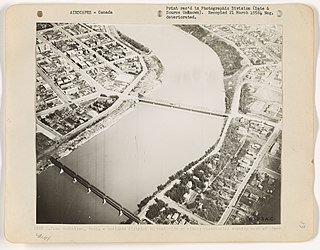
The history of Saskatoon began with the first permanent non-indigenous settlement of Saskatoon, Saskatchewan, Canada, in 1883 when Toronto Methodists, wanting to escape the liquor trade in that city, decided to set up a "dry" community in the rapidly growing prairie region. As of 1882 this area was a part of the provisional district named Saskatchewan, North-West Territories (NWT). Their organization, the Temperance Colonization Society, first examined this area in 1882 and found that it would make an excellent location to found their community based on the ideals of the temperance movement; Saskatoon traditionally considers 1882 its founding year and thus marked its centennial in 1982. The settlers, led by John Neilson Lake, arrived on the site of what is now Saskatoon by traveling by railway from Ontario to Moose Jaw, Assiniboia, NWT, and then completing the final leg via horse-drawn cart. The plan for the Temperance Colony soon failed as the group was unable to obtain a large block of land within the community. Nonetheless, John Lake is commonly identified as the founder of Saskatoon; a public school, a park and two streets are named after him.
The Park Theatre is a neighbourhood movie house on Cambie Street in Vancouver, British Columbia. Opened in 1941, it has passed through several owners, including Odeon Theatres, Famous Players and Alliance Atlantis Cinemas, and in 2005 was renovated and became part of the Festival Cinemas chain. It was acquired by Cineplex Entertainment in 2013 after the Festival chain ceased operations.
Coors Event Centre is an events hall in Saskatoon, Saskatchewan, Canada. The centre contains several large rooms is used for concerts, banquets, and other special events. In 2009, the former theater was renovated and combined with the neighboring former Royal Bank of Canada building. Combined, the centre totals 20,000 square feet.
Roxy Theatre, also known as The Roxy, is a live-action performance theatre located in Edmonton, Alberta, Canada. It was originally designated as a movie theatre, but was eventually converted into a live-action performance venue for the Theatre Network.
The Odeon Theatre Toronto was a movie theatre located at 20 Carlton Street in Toronto, Ontario. Designed by architect Jay English and operating between 1949 and 1973, the theatre was the Canadian flagship of Odeon Cinemas and one of Toronto's best examples of Streamline Moderne architecture.
